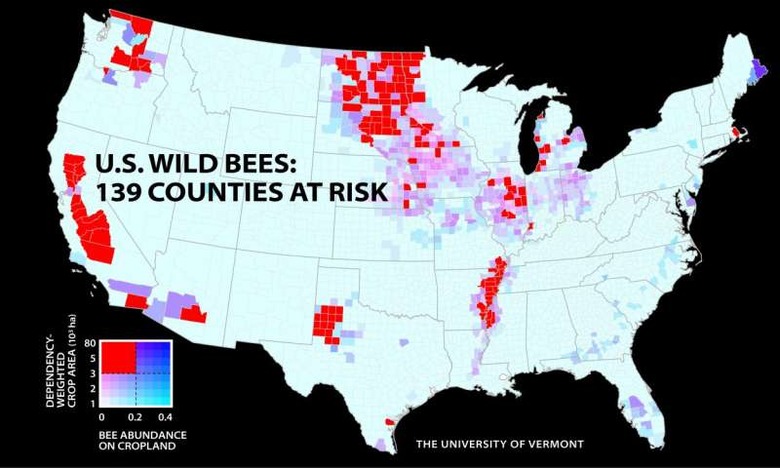New Map Shows US Bee Decline Is Happening In Vital Growing Zones
The bee population is declining, and it has scientists concerned. This isn't a new revelation, and indeed conservation efforts have been underway to increase wild populations. The latest bit of research on this issue, though, highlights how troublesome the matter is: it comes in the form of a map, the first of its kind, and shows that bee declines are happening primarily in the nation's most vital agricultural zones, putting necessary crops at risk.
Crops, obviously, are of vital importance, not just comprising billions of dollars annually in the nation's economy, but also being an important source of food and fuel for millions of people. These crops greatly depend on the wild bee population, which serves as pollinators making such agriculture possible. Things like climate change and insecticide use, however, are proving to be increasingly damaging threats to this bee population.

Researchers from several institutions created maps highlighting areas of particular concern, including the one above, which shows where wild bee populations are most severely affected. These regions include key agricultural zones in the midwest, California, the Pacific Northwest, and the south. Declines in wild bee population force farmers and producers to turn to so-called 'managed pollinators,' increasing costs.
While climate change and chemical use both have large impacts on bee populations, researchers also suggest that the increased razing of wild lands for conversion into mono-crop lands could be affecting the bees, as well. It seems some regions showing sharp wild bee declines are also regions in which the natural landscapes have been eradicated and replaced with hundreds or thousands of acres of mono-crops like corn.
SOURCE: Phys.org
